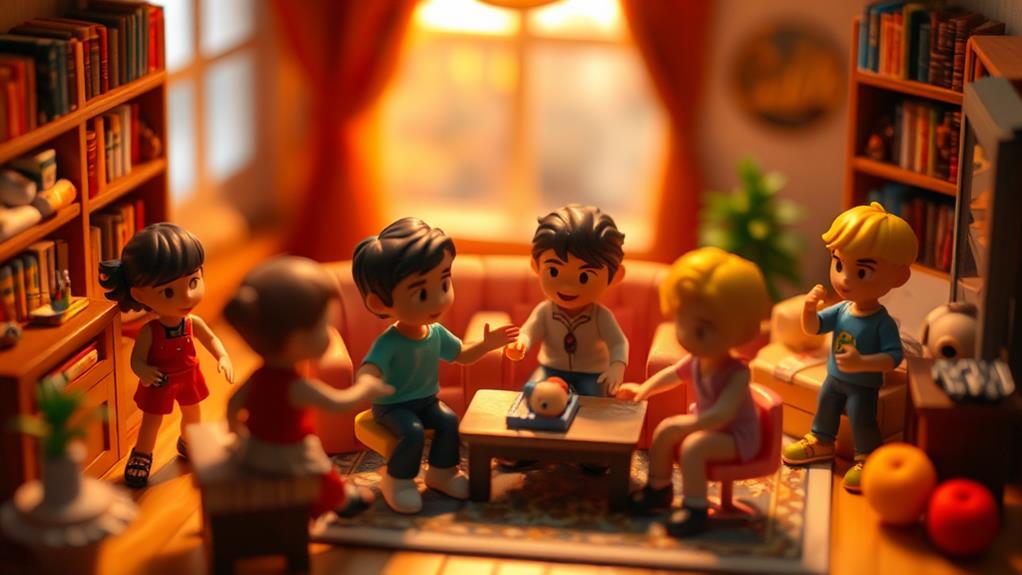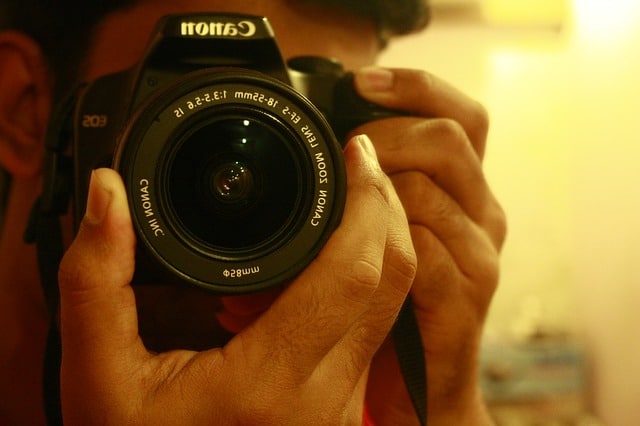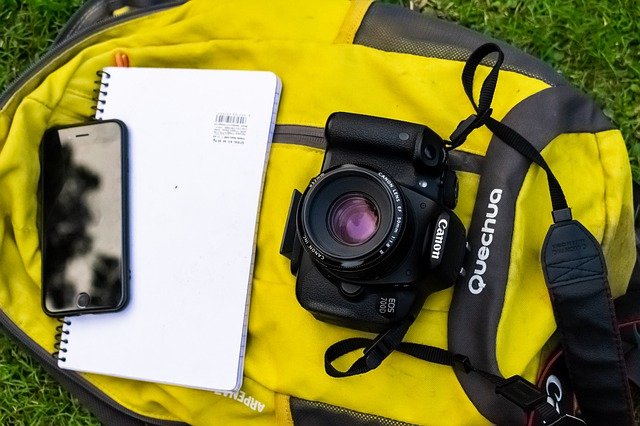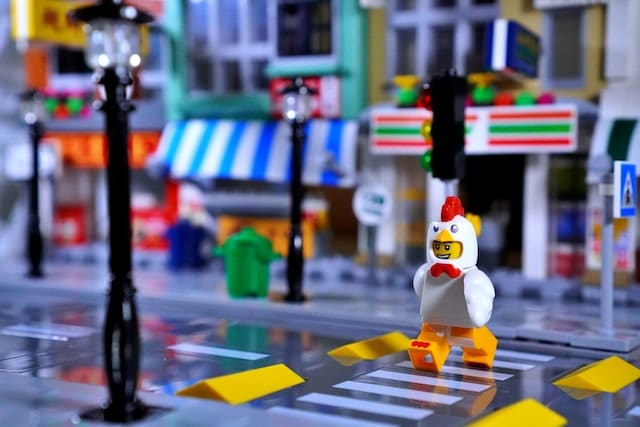Crafting engaging stories with toy figurines begins with choosing the right characters. Consider their personalities and guarantee they're consistent in size for a coherent tale. Set the perfect scene by identifying the setting and adding miniature props that align with your narrative. Enhance your story with lighting to convey moods and use camera angles to create depth. Convey emotion through posable figurines, focusing on body language. Capture dynamic action shots with motion blur and directional lighting for excitement. Don't overlook photography challenges; use natural light and stabilizers. With these techniques, you'll soon create stories that captivate and intrigue.
Choosing the Right Figurines
When selecting toy figurines for storytelling, a few key considerations can make a big difference in the experience. First, think about the characters you want to include in your story. Consider their personalities, roles, and relationships. Are you aiming for a hero's journey, a magical adventure, or a realistic slice-of-life tale? Choose figurines that embody these traits, whether they're superheroes, animals, or everyday people.
Next, pay attention to the scale and size of the figurines. Consistency matters. If your characters are drastically different in size, it can be difficult to maintain a coherent narrative. Select figurines that complement each other visually, enhancing the believability of your story world.
Material and durability are also essential. Look for figurines made from sturdy materials that can withstand frequent handling. This guarantees they last through multiple storytelling sessions. You don't want a broken figurine disrupting your creative flow.
Lastly, consider the figurines' posability. Those with movable limbs or heads offer greater flexibility and expression, allowing you to convey emotions and actions more effectively. By carefully choosing the right figurines, you set the stage for a dynamic and engaging storytelling experience.
Setting the Perfect Scene
Creating an immersive environment is vital for bringing your storytelling to life. Begin by considering the world your toy figurines inhabit. Is it a bustling city, a mystical forest, or perhaps a futuristic spaceship? Identifying the setting will guide your choices in props and backdrops. Use materials like fabric, paper, or even natural elements to construct a believable landscape. A few well-placed items can transform a simple tabletop into an enchanting scene.
Consider the scale of your figurines when selecting props. Miniature furniture, tiny trees, or small-scale vehicles can add depth and context to your story. Pay attention to details that complement the narrative. If your story is set in a medieval kingdom, add castles, cobblestone paths, or market stalls. For a jungle adventure, incorporate lush greenery, vines, and hidden treasures.
Think about how your characters interact with the environment. Are there obstacles they must overcome, or landmarks that play a significant role in their journey? Arrange your scene to facilitate movement and action. Keep your audience engaged by creating visually dynamic and interactive settings. By thoughtfully crafting your scene, you'll provide an intriguing backdrop that enhances your story's impact.
Lighting for Mood and Effect

With your scene set, it's time to focus on lighting to enhance the mood and effect of your storytelling. Lighting can transform the atmosphere, making your toy figurine scenes more engaging. Start by considering the emotion you want to convey. Are you crafting a tense, mysterious moment or a cheerful, lively narrative? For a dramatic effect, use shadows. Position a single light source at an angle to cast long shadows, giving your scene depth and intrigue.
If you're aiming for a light-hearted story, use soft, even lighting. Place lights on either side of your scene to eliminate harsh shadows. This creates a warm, inviting atmosphere. Experiment with colored lights to evoke different feelings. A blue hue can suggest calmness or sadness, while a red tint can indicate intensity or danger.
Use natural light for an authentic feel. Morning or late afternoon sunlight can add a golden glow to your scenes. Be mindful of the time of day, as it influences light quality. Also, try using small lamps or LED strips for precise control. By adjusting your lighting, you can guide your audience's emotions and enhance your story's impact.
Mastering Camera Angles
As you explore mastering camera angles, remember that the perspective from which you capture your toy figurine scenes can dramatically alter your storytelling. Each angle provides a unique viewpoint, influencing how your audience perceives the scene. Low angles can make figurines appear powerful and dominant, while high angles might portray vulnerability or insignificance.
Experiment with the following angles to enhance your storytelling:
| Angle | Effect | When to Use |
|---|---|---|
| Eye Level | Neutral, relatable | Everyday scenes or conversations |
| Low Angle | Power, heroism | Showcasing a character's strength |
| High Angle | Vulnerability, insignificance | Highlighting a character's weakness |
Getting close to your figurines with a macro lens can immerse viewers in the scene, creating a sense of intimacy. Conversely, stepping back to capture a wider shot can set the stage and provide context.
Pay attention to the background and how it aligns with your figurine's gaze. A well-framed background can add depth and meaning to your scene. Remember, the right camera angle can transform a mundane scene into an epic tale. Don't hesitate to try unconventional perspectives—you might discover a fresh narrative angle you hadn't considered.
Conveying Emotion Through Poses
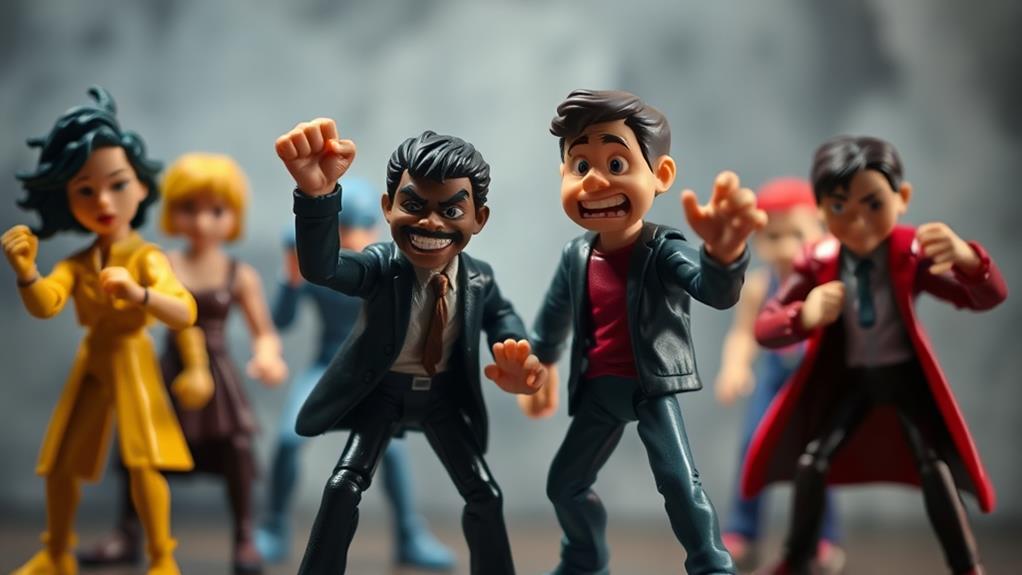
Emotion is the invisible thread that stitches your storytelling together, and poses are the tools that weave it. When using toy figurines, capturing the right pose can transform a static figure into a character bursting with life and feeling. To convey emotion effectively, pay attention to the subtleties of body language. A slight tilt of the head, the angle of a hand, or the bend of a knee can express a range of emotions from joy to sadness or anger to fear.
Start by considering the emotion you want to portray. If your character is feeling triumphant, raise their arms high and tilt their chin upward. For a more introspective or sad moment, have them hunch slightly, with their head lowered. Experiment with different angles and positions to find what feels most authentic.
Don't forget the role of facial expressions. Although toy figurines might have limited features, the slight adjustments you can make with their body can compensate, suggesting a frown or smile by how you position their limbs. Creating emotion with poses involves harnessing these small details to build a convincing narrative, making your story resonate with your audience.
Creating Dynamic Action Shots
Capturing the essence of movement brings energy and excitement to your storytelling with toy figurines. To create dynamic action shots, start by envisioning the scene's motion. Picture the figurine mid-leap or in the heat of battle. These moments are thrilling and can captivate your audience's attention. Position your figurine to reflect this movement, like angling its limbs as if it's caught in the act.
Lighting plays an essential role in conveying action. Use directional lighting to cast dramatic shadows, emphasizing the movement. Adjust the light source to mimic natural movement, like sunlight streaming during a chase. Shadows can add depth and drama, making the action feel more intense.
Experiment with camera angles. Shooting from a low angle can make your figurine appear larger-than-life, adding to the action's impact. Alternatively, overhead shots can simulate a bird's-eye view, perfect for aerial maneuvers.
Incorporate motion blur for added realism. You can achieve this by slightly shaking the camera during the shot or using photo editing software afterward. This technique suggests speed and fluidity, enriching the narrative. Remember, it's all about creating a scene that feels alive and thrilling.
Storytelling With Props and Backgrounds

In addition to your figurines, incorporating props and backgrounds can greatly enhance your storytelling. Props add depth and context to your narrative, transforming simple setups into dynamic scenes. Backgrounds set the stage for your story, creating an immersive environment that complements the action and emotion of your characters. By thoughtfully choosing and arranging these elements, you can create a richer visual experience that captivates your audience.
To effectively use props and backgrounds, consider these three tips:
- Match the Theme: Verify that your props and backgrounds align with the theme of your story. This consistency strengthens the overall narrative and helps viewers connect with the scene's mood and setting.
- Balance the Composition: Arrange props and backgrounds so they don't overwhelm your figurines. They should enhance rather than distract from the main action, maintaining a clear focus on your characters.
- Experiment with Textures and Layers: Use different materials and layers to add depth to your scenes. This can create a more realistic and engaging backdrop that draws viewers in and adds dimension to your story.
Overcoming Common Photography Challenges
When photographing toy figurines for storytelling, you might encounter several challenges that can impact the quality of your images. One common issue is lighting. Natural light is ideal, but it's not always available. Consider using soft, diffused artificial lights to avoid harsh shadows and highlights. Position your lights at different angles to create depth and dimension.
Another challenge is achieving the right focus. Toy figurines are small, making it tricky to capture details. Use a macro lens or enable macro mode on your camera for close-up shots. Steady your camera with a tripod to prevent blurriness and guarantee sharp images.
Background distractions can also detract from your story. Simplify your scene by using plain backdrops or adjusting the depth of field. A shallow depth of field can blur backgrounds, making your figurines stand out.
Lastly, composition is key. Experiment with different angles and perspectives to find the most engaging shot. Try shooting from the figurine's eye level to create a more immersive and relatable scene.
Frequently Asked Questions
How Can Toy Figurines Be Used to Teach Storytelling to Children?
Use toy figurines to spark creativity in children by acting out scenes. Encourage them to create characters and plots. They'll develop storytelling skills as they narrate their figurine's adventures, making learning fun and interactive.
What Are Some Tips for Maintaining and Preserving Toy Figurines Used in Stories?
Think of toy figurines as characters in a cherished book. Handle them gently, store them in a cool, dry place, and regularly clean them. These steps keep the story alive, ensuring they're ready for each imaginative adventure.
How Can I Incorporate Sound Effects to Enhance the Storytelling Experience With Figurines?
To enhance storytelling, use a smartphone or tablet to add sound effects. Download sound apps or record your own effects. Match sounds to actions, creating an immersive experience that brings your figurine stories to life.
What Are the Best Platforms for Sharing My Toy Figurine Stories With a Wider Audience?
YouTube attracts over 2 billion users monthly, making it ideal for sharing figurine stories. Post on Instagram and TikTok too, where visual storytelling thrives. Engage viewers with hashtags and collaborations to boost your audience reach considerably.
How Do I Ensure Cultural Sensitivity When Crafting Stories With Diverse Figurine Characters?
Research diverse cultures, consult with knowledgeable individuals, and embrace respectful representation. Listen to feedback and continuously educate yourself. Guarantee your stories honor different backgrounds, avoiding stereotypes. Approach storytelling with empathy and genuine curiosity about cultural nuances.
At a Glance
Congratulations, intrepid storyteller! You've mastered the art of turning toy figurines into epic narrators of tales so gripping, even Shakespeare might take notes. You've chosen the perfect cast, set the scene, and used lighting like a modern-day Rembrandt. Your camera angles rival Spielberg's, and your action shots make Marvel envious. With props that would put a theater troupe to shame, you're ready to face the ultimate challenge: convincing your friends it's not just child's play.

